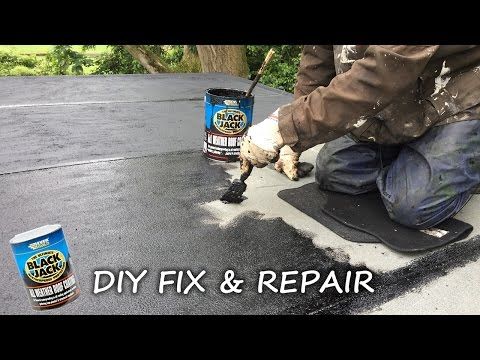Last Updated October 7, 2022
TireHungry.com is reader-supported. When you buy through links on our site, we may earn an affiliate commission at no added cost to you
Most of us have experienced running our cars on a slow leak. The hard part about it is trying to fix it in the middle of the road or during a long drive. It’s annoying and inconvenient especially when you are on the go.
People always take extra precautions to bring an extra tire, but frankly speaking, not every car owner knows how to change a tire properly.
You need a specific set of tools and experience to replace your tire with a spare one. It’s time-consuming and stressful to go through, especially for new drivers. Using aerosol repair such as Fix-a-Flat is a good way to start repairing your tire with slow leaks.
What's In This Guide?
Fix-a-Flat was invented in the ’70s by Snap products. Fix-a-Flat aerosol sealant became a well-known brand because of its genius way to mend punctured tires. For over 50 years, it is still doing its job and has made huge strides in the automotive industry.
Even to this day, Fix-a-Flat has been able to compete with other brands in terms of mending vehicle tires. They have proven enough that they can help out vehicle owners with flat tires and slow leaks.
Before you start with the procedure, it is best to research how to apply Fix-a-Flat property to prevent any wastage and tire complications. Here is a quick list on what are the things to do and to observe before considering using the product.
While the serviceable life greatly depends on the severity of the climate and location, you can still make the most out of your winter tires’ value within their lifespan. In order to do so, you need to identify what makes it unique compared with regular, all-season tires, so you can apply appropriate care and maintenance specifically for these types of tires.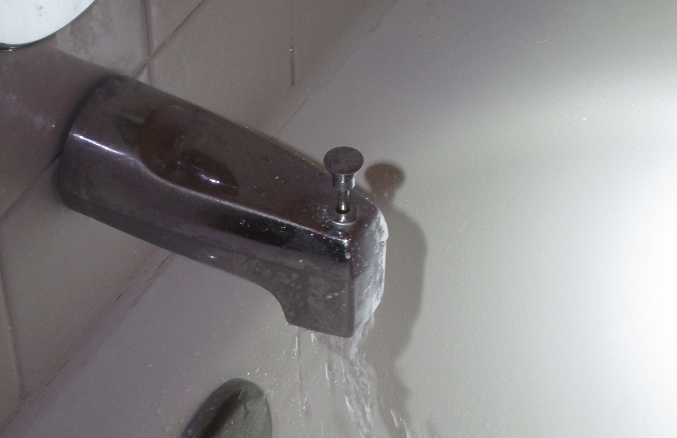
To better understand the situation, knowing where the slow leak is coming from is the top priority. It’s best to touch the tire and try to determine where the air is coming out from. That way, drivers will be able to check how many slow leaks are possibly there. Touch the treads and sidewalls. If the slow leaks can’t still be found, Applying water with soap on the tire will also be helpful. By dropping the water soap on the tire, It will be easier to know the area where the slow leak is by checking the bubbles.
Now that you have established that your tire has indeed slow leaks on it, you can now use Fix-a-Flat aerosol repair to mend your broken tire and get back on the road as quickly as possible. The good thing about it is you will instantly see the instruction at the back of the aerosol can.
Compared to the traditional way of changing tires in the middle of the road, Fix-a-Flat offers a more convenient way of putting your tire back together again.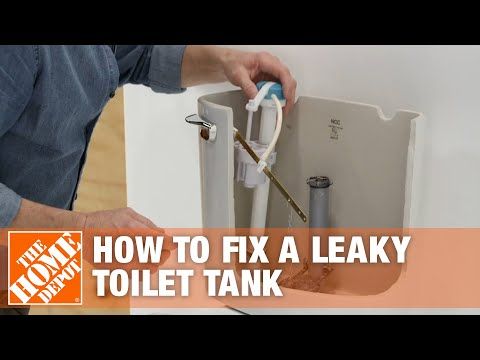
Since we have already mentioned that it’s important to know where the leak is coming from, you now need to press on the punctured area of the tire by moving it to the bottom. You can do that by slowly moving your car up until the punctured area of the tire is on the bottom part. The reason why you need to do this is to minimize slow leaks when applying the Fix-a-Flat sealant aerosol.
Keep in mind that Fix-a-Flat can repair small punctures and cuts to the tread alone. It cannot be used for any sidewall punctures. If the punctures are found on the sidewall, not forcing to drive the vehicle would be the primary option. Use your spare tire or better yet, consult a mechanic for a more detailed and furnished repair.
Step 2: Check The Date Your Aerosol Sealant Was ManufacturedA very vital piece for the process is to know when was the sealant manufactured. Fix-a-Flat has a shelf life of 2 years. Using an expired one could result in a much more alarming state.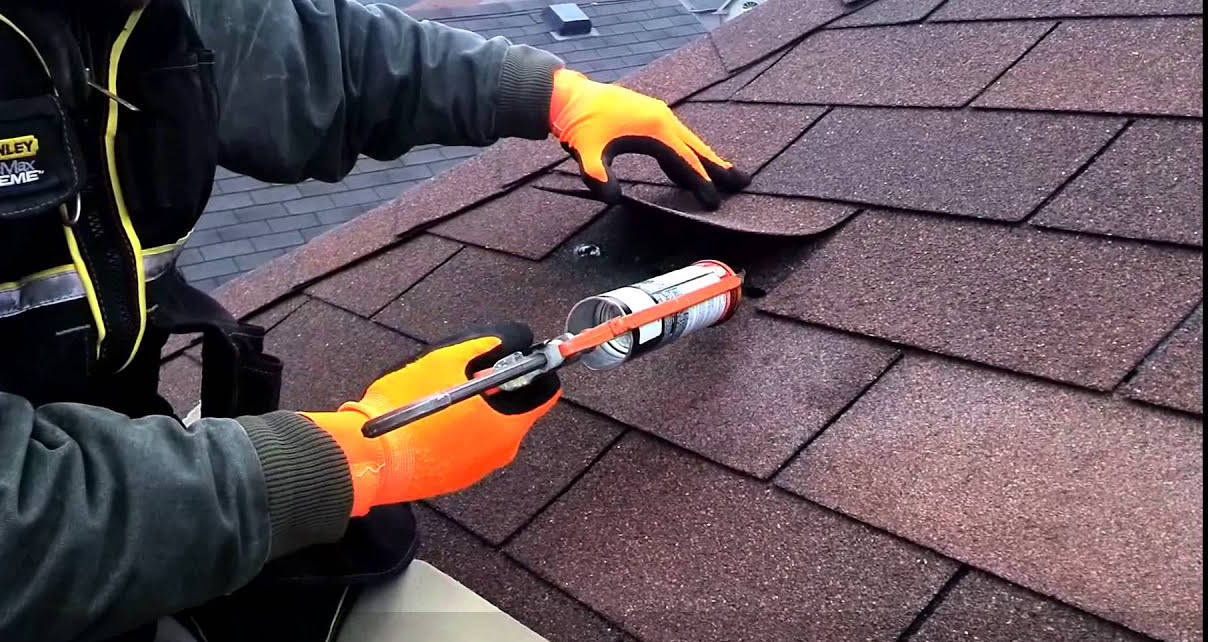
Make sure that all components of your Fix-a-Flat sealant are fully incorporated. To do that, you have to shake it well for at least 30 seconds to 1 minute before using it. This is a simple and very important part of the process.
Note that there were some reviews whereas the aerosol spray did not work because it was not shaken well before use. This could result in a critical error that would lead to an even bigger problem. Not following this crucial instruction may lead to product waste and the tire may possibly not get repaired.
Step 4: Attach the Hose on The Air Valve StemThis is the time where you’ll apply the sealant to your tire. Attach the hose to the valve, remove the safety pin and press the yellow button to start putting air and sealant to the tire. Keep in mind that you will use the whole sealant can on your tire. Make sure that you apply the whole sealant to your tire to prevent any malfunctions. We will give you a quick guide on which size to use for every type of vehicle.
We will give you a quick guide on which size to use for every type of vehicle.
It’s easy to know if the procedure was done correctly. The tire rim should start to lift off the ground during the process. If you see that the white liquid stops flowing to the hose, that simply means that you’ve used up all the sealant from the can.
Step 5: Drive Your Car AfterwardsYou do not want your sealant to sit on the bottom part of the tire. It will cause malfunction and imbalance to your car. You want to make sure that the sealant is completely flowing in the tire. To do that, you have to drive your car for about 5 to 10 minutes and check whether there are changes. After driving for 5 to 10 minutes, inspect your tire once again and see if there are improvements.
For some cars, TPMS (Tire Pressure Monitoring System) is a way to determine whether your sealant was effective. You can easily see the TPMS on your car dashboard. If the light turns on, it means that the procedure was able to fix the problem.
As soon as you were able to fix your tires using Fix-a-Flat, it is highly recommended that you seek help from tire experts to check the condition of your tires. You would want to make sure that the tire is properly checked and fixed. That being said, Fix-a-Flat is a very effective tool to fix your tires for an emergency. But you need to make sure to cross out every possible factor as to why your tire had a slow leak. Consulting from experts and securing spare tires, and another Fix-a-Flat can is most helpful.
You only have to resort to aerosol sealants when there is an emergency at hand. Depending on this, every time you have tire trouble will result in unexpected tire replacement and could cost you more money.
Step 7: Measure The Pressure Of The Tire Using a GaugeIt is very well proven that having a gauge can serve as a huge help whenever you have tire problems. By measuring the PSI of your tire, you would be able to determine whether the aerosol worked or not.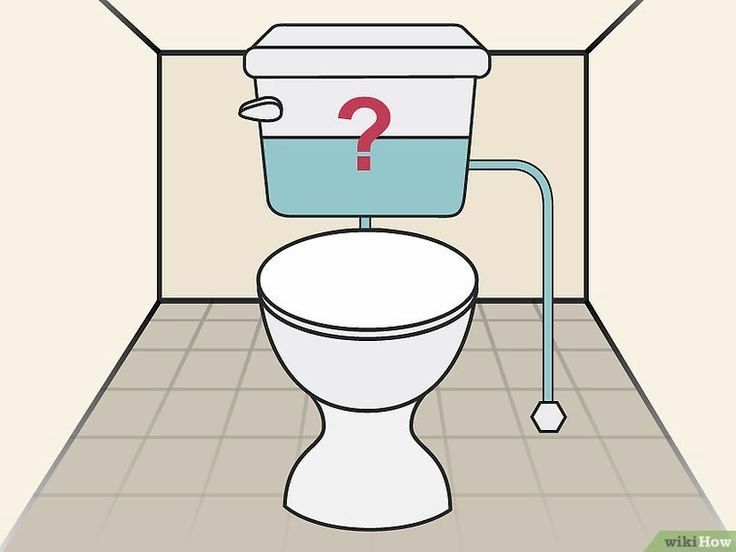 Keep in mind that the standard pressure of the tire should be around 30 to 35 PSI. If the PSI still falls behind the recommended range, it is most likely that the slow leak issue has not been solved yet.
Keep in mind that the standard pressure of the tire should be around 30 to 35 PSI. If the PSI still falls behind the recommended range, it is most likely that the slow leak issue has not been solved yet.
Every vehicle has a different tire size. Surely, an SUV vehicle has a bigger tire compared to a sedan. Subcompacts would have the smallest tire size while trucks have the biggest ones. It is imperative to determine your tire size before availing Fix-a-Flat. That way, you will be sure that you have enough, not less sealant for your tire whenever you get a slow leak.
We will list down different sizes of Fix-a-Flat sealant and tell what size of the vehicle is it best used for.
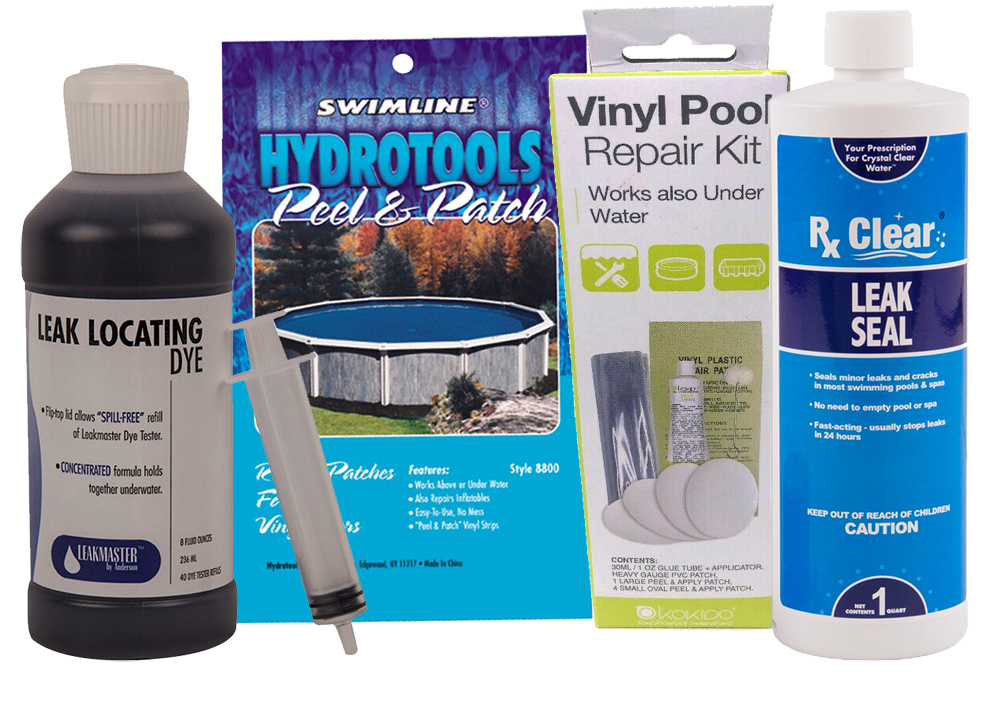 (#S60430)
(#S60430)If ever you have a larger size for a smaller vehicle, it’s best to consult tire experts on how to proceed with the method. Alongside this, you can also monitor the fixing by using a tire pressure gauge to check the tire’s air pressure.
Risks and ConditionsYou can see tons of reviews from the internet whereas they say that Fix-a-Flat indeed works. However, there are also reviews that state that it did not help at all. It is hard to argue about the matter, that is why it is important to keep in mind that Fix-a-Flat is not a permanent solution
Aside from that, we have to remember that Fix-a-Flat can fix small punctures such as nails or small shards (1/10th of an inch or lower).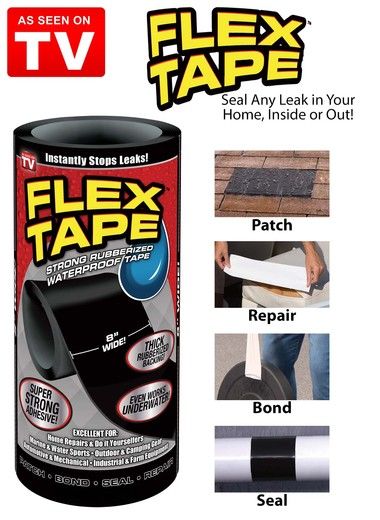 However, there is not enough evidence that FIx-a-Flat can mend broken tires with large holes (a quarter of an inch or higher).
However, there is not enough evidence that FIx-a-Flat can mend broken tires with large holes (a quarter of an inch or higher).
Slow leaks are frequently associated with pinch damage to the sidewall, particularly on the inner sidewall where these are not apparent. These are results from low-pressure collisions with curbs, potholes, and railroad tracks. These usually cause a bubble on the sidewall between the layers of the case, which might subsequently burst more forcefully. Even if the source of the initial leak is fixed, sealants will not be able to repair this sort of damage.
Even with tiny punctures, tire sealants may react differently with the tire, preventing a proper fix and may result in a tire replacement.
Other ConsiderationsThere were reports that Fix-a-Flat does not seem to work well in cold regions. The reason behind this is that sealant gets frozen quickly and causes the tire to have an imbalance movement when on the go.
Keep in mind that by using any sealants, the tire is at risk for a long period of damage.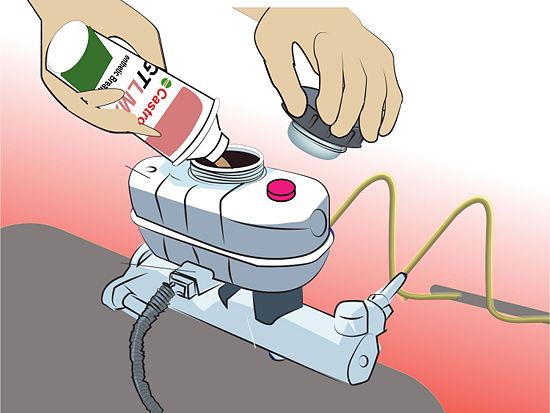 It may not manifest quickly but if not treated right away, it can cause the tire to be inefficient and be subject to replacement.
It may not manifest quickly but if not treated right away, it can cause the tire to be inefficient and be subject to replacement.
Lastly, Improper use of any sealants can disrupt the detection of TPMS for vehicles. That is why it is highly recommended to follow all the steps precisely to prevent this from happening.
FAQ’sHow Long Can Fix-a-Flat Be Effective?Fix-a-Flat sealant can be effective for as long as 3 days or 100 miles of driving if the sealant is applied correctly. Knowing that this is not certainly a permanent solution to slow leaks, it is better to get your tires repaired and consult the experts whether it needs a replacement.
Can I Use Fix-a-Flat on Quiet Tires?No, Quiet tires have treads that are coated with foam. If any sealant is applied, the sealant may absorb all the foams from the tires resulting in strong vibration and unwanted noise. Since there is no way to remove the foam, this will lead to tire replacement.
Yes, there are. But what makes Fix-a-Flat aerosol sealant stand out is its household name. Primarily, its reputation in fixing small punctures has been tested and proven by many car owners. Aside from that, Fix-a-Flat has by far, the easiest and quickest method for mending slow leaks.
ConclusionWhether the reason for having a slow leak is a rough road or a nail on the road, we proved that there are ways to mend our tires easily and quickly. However, we have to remember that aerosol such as Fix-a-Flat is only as good as a bandage. Learning how to replace a flat tire, and determining whether a tire has a slow leak is important for us to be able to decide on which best route to take.
Recently Published GuidesTop Tire Retailers
A flat tire is not a fun situation to be in.
It can happen at the most inconvenient time leaving you stranded on the road.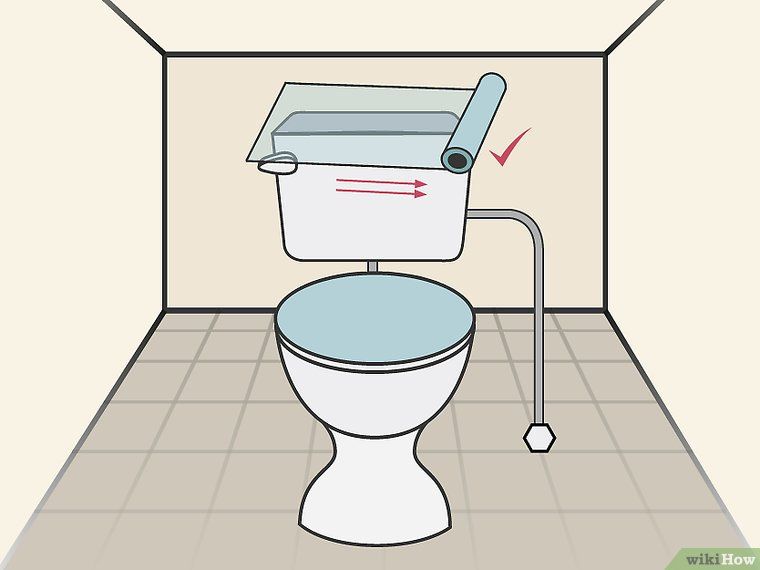
Oftentimes, the cause of a flat tire is a result of a slow leak due to a puncture in the tread area of the tire or air leaking around the rim.
While tire sealants can in some cases fix rim leaks, the products are not really recommended for such a leak.
If you want a proper guide on fixing the leaks, you can check our in-depth guide: How To Fix A Tire From Leaking Around The Rim?
Here though, we’ll talk about how tire sealants can offer a quick and painless temporary solution for slow leaks around the tread, can stop a tire from losing air too quickly, and put you back on the road with ease.
The short answer is yes, you can use fix-a-flat sealant to fix small punctures but it may not be the most reliable product.
Fix-a-Flat does not contain any particles to physically clog up the hole. Instead, it contains air in the sealant which when released from the can pushes the sealant into the tire, finds the source of the leak, and forms a latex foam to seal the leak.
Of course, a product as such that does not contain particles to physically seal the leak, you can imagine that it will only work for very minor leaks and in some cases even outright fail to mend the leak which is apparent from many unsatisfied consumers that complain about the very same issue.
Although the manufacturers claim Fix-a-Flat seals punctures up to a quarter-inch (1/4’’), several unhappy consumers fail to agree with this claim.
The consensus around Fix-a-Flat is very mixed.
Some consumers complain that Fix-a-Flat is just evil in a can as it does not work in fixing a flat whatsoever and instead damages their tire.
Others praise it for being a quick and effective solution for getting them back on the road.
The bottom line is that Fix-a-Flat is not really the best when it comes to a tire sealant product and there are other options available that offer much better reliability.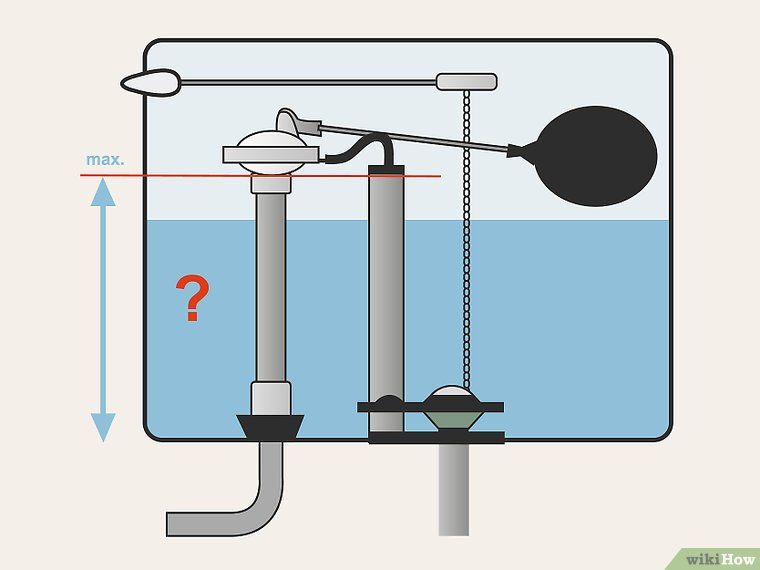
Watch this short video from Scotty Kilmer addressing the issue:
Fix-a-flat, along with other tire sealants of the sort, is intended to be used temporarily, preferably only for emergencies allowing you a quick and reliable solution to get you back to an auto-shop or your home.
Different manufacturers claim different lifespans for their sealants.
The manufactures of Fix-a-flat rate it for about 100 miles or 3 days after it is used (whichever comes first).
It is possible to get more or less life from the sealant which is apparent from many consumer reports.
Several consumers report that their can of Fix-a-Flat was unable to withhold the leak in the first place while the same can lasted for weeks for others.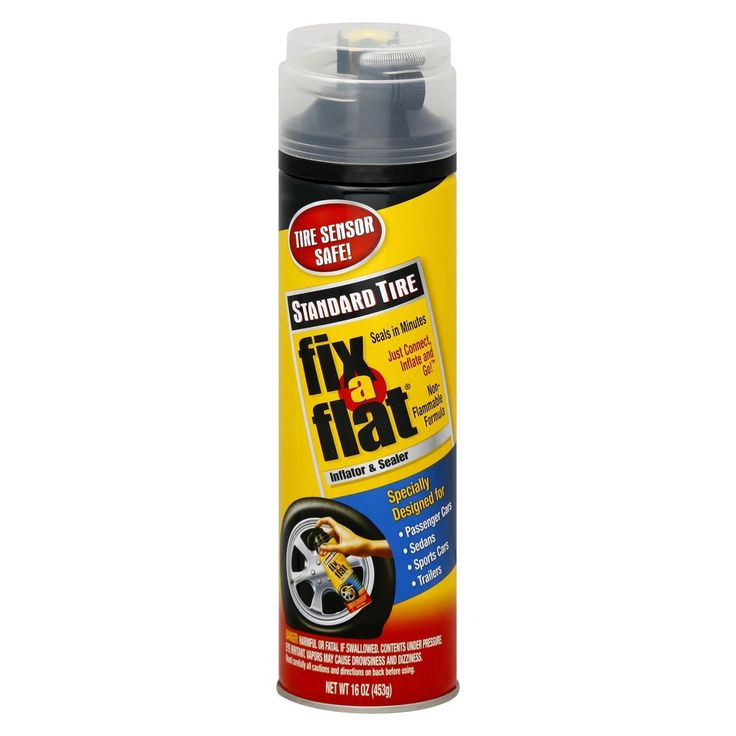
Fix-a-flat certainly isn’t the brightest against its competitors when it comes to reliability.
However, the key takeaway is that you should always use the sealant as a temporary fix only and not try to get more life out of the sealant than the manufacturer’s recommended usage.
An important question that drivers have in mind is whether a tire sealant like Fix-a-Flat is bad for their tires? Will it cause damage and potentially ruin their tires?
Well, the answer to that question is that it depends.
Many modern tires include a Tire Pressure Monitoring System (TPMS) sensor that gives real-time information to the driver about the pressure inside the tire.
Tire sealants are notorious for damaging the TPMS sensor.
However, the manufacturers claim and many consumers report the fact that Fix-a-Flat is entirely TPMS-sensor safe.
The contents inside Fix-a-Flat are just a liquid foam formula with air.
At extreme cold temperatures, the material inside Fix-a-Flat freezes and solidifies inside the tire.
Such an outcome is hazardous for safe driving as it causes tire imbalance, poor handling, and steering on the road.
Corrosion is something drivers are always paranoid of when it comes to using Fix-a-Flat or even any tire sealant for that matter.
But do these products actually cause corrosion?
Well, the answer is no, only if you use them as a limited-time solution. After all, tire sealants really are not a permanent fix and the onus is on you the driver, to clean the stuff and repair the tire as soon as possible, or else prolonged exposure to the chemicals may very well lead to corrosion building up on the rim.
If used only for the recommended usage of 100 miles or 3 days (whichever) comes first, fix-a-flat does not corrode aluminum or damage any protective coating that modern rims come with.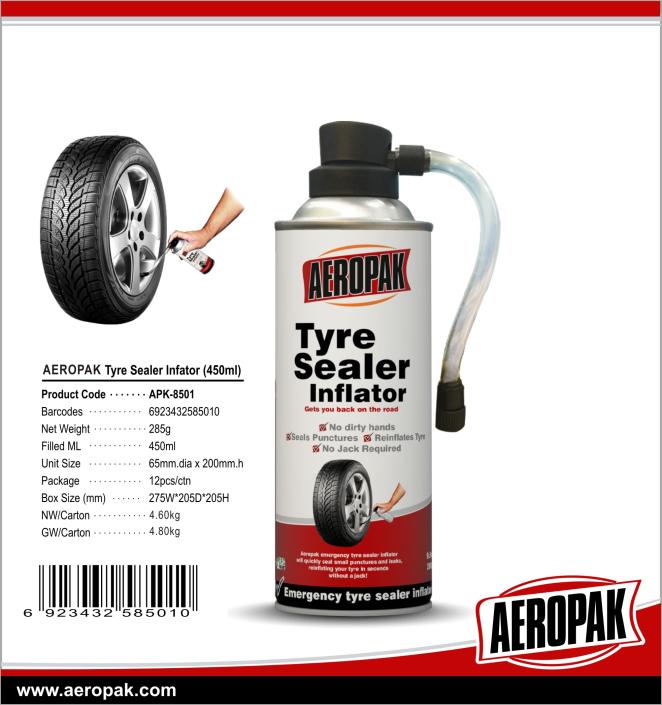
Consumers complain that Fix-a-Flat left a huge mess in the rim, but that is merely because they tried to use the product as a permanent solution, which is certainly not advisable.
TL;DR
Fix-a-Flat is TPMS sensor-safe, does not corrode or cause any damage to the wheels but does freeze in extremely cold temperatures resulting in tire imbalance.
Tire sealants available on the market can be divided into two categories:
The idea is the same in both these categories. They generally (with some exceptions e.g., Fix-a-Flat) contain some form of high strength Aramid Fibers commonly known as Kevlar in the liquid that find the hole or the puncture inside the tire and plug it from the inside.
The liquid acts as a carrier for transporting the fibers to the site of the leak and the fibers then clog up the hole essentially forming a seal.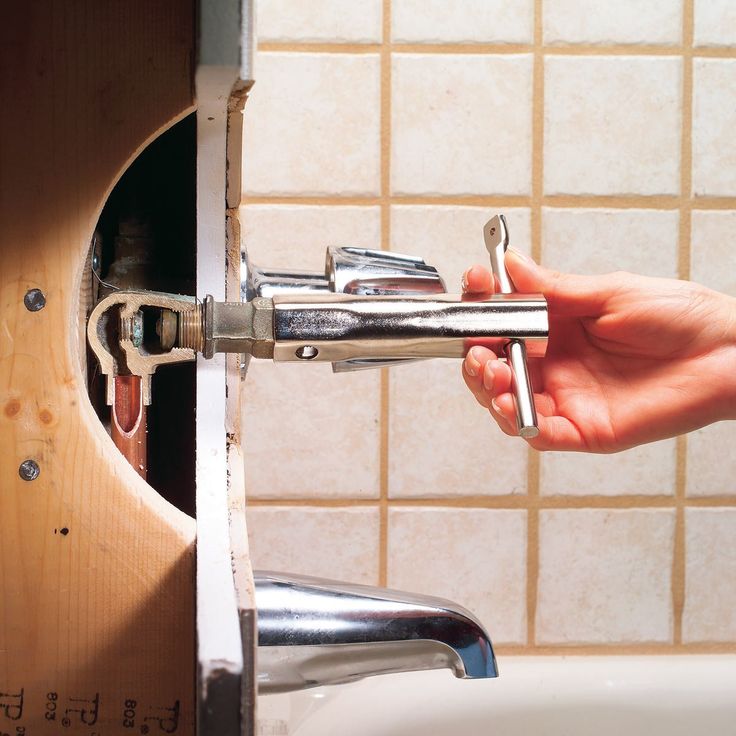
Tire sealants are intended to be used in a worst-case scenario only.
There are much better options for fixing a flat tire, but they all boil down to availability, the amount of time you have on your hands, and ease of access on the road.
You can mount a spare tire to get you back on the road, but chances are that if you are short on time or have no experience in changing a tire, it can prove to be a nightmare for you.
For similar reasons, having a tire plug kit in the trunk of your car will do you no good as well as it takes quite a bit of experience and familiarity and a fair bit of time as well to install a plug.
Another option may be using a 12-volt air compressor to easily inflate the tire that provides you with enough tire pressure to get you back home or to an auto-shop if the leak is slow enough.
But if none of the options are practical in a flat tire scenario, carrying a can of sealant in the trunk of your car can turn out to be a lifesaver.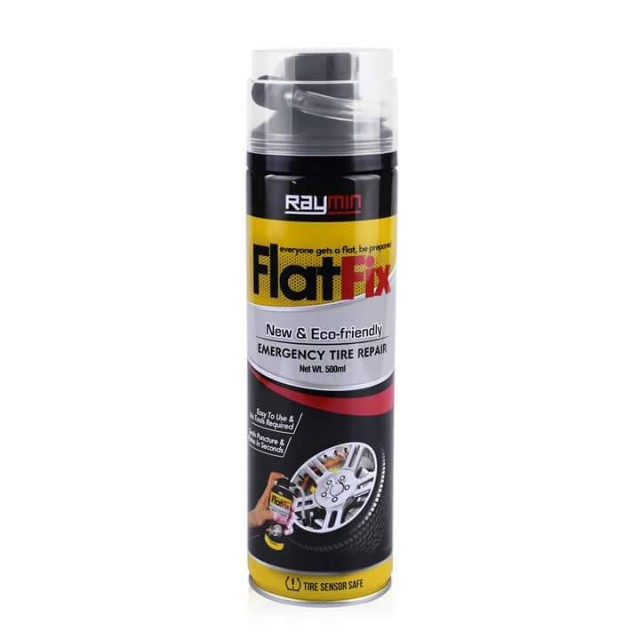
A sealant is a quick and easy fix that does not require jacking up the car or unmounting the tire from the wheel. Little to no expertise is required for using a tire sealant.
This alone makes it worthwhile to have it in the boot of your car.
An important thing to note when it comes to using a tire sealant is that future repairs can be a real pain for you as most auto-shops are unwilling to repair a tire that has been treated with a tire sealant as it takes additional effort and time to clean the tire.
You may end up very well just replacing the tire instead of repairing it.
So, just keep that in mind when using a tire sealant that you may need to clean the tire yourself first or find a local auto-shop willing to first clean it for you.
While fix-a-flat is capable of mending slow leaks and is comparatively the cheapest, it is not the best tire sealant product by far. There are several products available that outperform Fix-a-flat and give you more bang for your buck.
This green-colored viscous slime product reliably seals up to 1/4’’ (6mm) hole. It is TPMS sensor-safe, and does not cause any damage to the alloy construction of your wheel. The edge it has over Fix-a-Flat is that it has a great lifespan and does not freeze in extreme temperatures and offers much better reliability across its cans.
However, it is a tad bit more expensive, more difficult to apply into the tire, and requires more quantity (16 oz./473 ml for regular full-sized tire and 12 oz./354 ml for motorbikes).
The advantages and the overall reliability of the product far outweigh its cons and due to these facts, it is our go-to recommendation for on-road purposes.
For off-road purposes, it is one of the best products available on the market.
While other products claim to mend up to 1/4’’ (a quarter-inch) puncture, FlatOut tire sealant actually claims to mend up to 1/2’’ (half-inch or 12 mm) hole!
That is double the size of a puncture! Satisfied consumers verify that it can actually mend a hole that size, which is no ordinary feat whatsoever.
Considerably more on the expensive side, yet it is a capable sealant that manufacturers claim to last more than 6 months and is perfectly capable of mending holes up to a quarter-inch (1/4’’ or 6 mm puncture).
Tire sealants are a cheap and relatively easy solution when it comes to a slow leak resulting in a flat tire. However, we cannot re-iterate enough that they are intended for temporary use or emergencies only when time is of the essence and no other viable options are available. In such a scenario, a can of tire sealant can prove its worth by immediately and painlessly putting you back on the road without having to jack up the vehicle and remove the tire.
(Visited 9,665 times, 8 visits today)
Health experts and the medical community link home mold to serious health problems. If you've found mold in your home, it's time to act.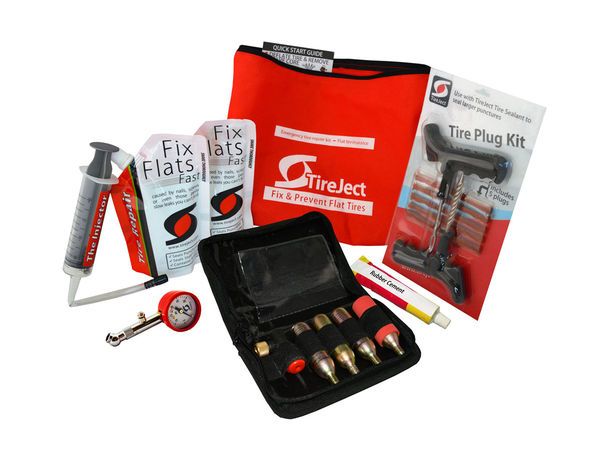 Order services for the removal of mold and mildew in the cleaning company "Ecology Vector".
Order services for the removal of mold and mildew in the cleaning company "Ecology Vector".
Mold removal or removal are processes by which a room or objects are cleaned and disinfected to kill existing mold, stop the spread of mold and prevent it from returning. Mold control steps can also include removing water-soaked materials such as drywall or flooring and refurbishing using advanced mold control methods.
Cleaning mold is an important step in keeping your home safe after a flood or flood.
Mold in the home is problematic for several reasons. The main ones are:
Mold removal protects your family's health, preserves the structural integrity of your property, and eliminates the musty, damp smell associated with mold.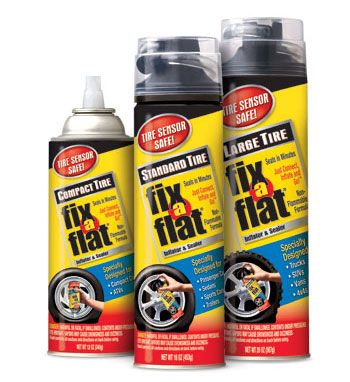 Our mold and mildew removal services are not superficial - we work to repair any damage and prevent recurrence.
Our mold and mildew removal services are not superficial - we work to repair any damage and prevent recurrence.
Our technicians have seen and fixed all possible mold problems.
Here are the most common causes of mold in your home and business:
Between 50 and 100 common types of household mold can cause health problems. Due to the risks associated with mold exposure, it is best to clean up mold as soon as possible after it is discovered. While the type of reaction depends on the mold present and the health history of the people living in the home, the EPA and CDC agree that all types of mold can cause health problems such as:
While the type of reaction depends on the mold present and the health history of the people living in the home, the EPA and CDC agree that all types of mold can cause health problems such as:
If you've just discovered mold in your home or workplace, or experienced a flood, you may be wondering what to do next. Mold only takes two to three days to start growing after a flood or other destructive water event. To avoid mildew, read these tips and make sure the water is removed and the surfaces dry within 48 hours.
If you have just discovered mold or suspect you have mold in a hidden place - under the floor, above the ceiling, behind a wall - you need to call a licensed professional to remove the mold.
Mold is usually caused by a slow leak from a plumbing system, too humid indoor air, or flooding that has not been professionally remedied.
The mold remediation process consists of determining the location and volume of mold and then safely removing or eradicating it completely. In cases where moisture has caused the structure to rot or the material cannot be completely dried, moldy areas must be removed and repaired/remodeled. The first step in any fungus control process is a thorough examination by a specialist. There are several approaches to actually cleaning or eliminating mold. A removal and recovery specialist will work with you to select the best approach for your premises, depending on variables such as:
In cases where moisture has caused the structure to rot or the material cannot be completely dried, moldy areas must be removed and repaired/remodeled. The first step in any fungus control process is a thorough examination by a specialist. There are several approaches to actually cleaning or eliminating mold. A removal and recovery specialist will work with you to select the best approach for your premises, depending on variables such as:

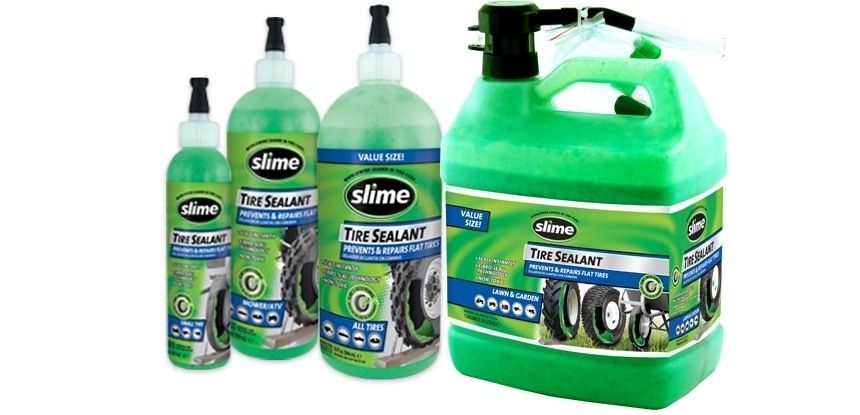
By choosing Eco Vector, you can relax knowing your home is in good hands. Our mold removers are fully certified and trained to the strictest industry standards.
A flat tire is a situation in which the tire has lost air and no longer inflates. This may be due to a puncture, a blown tube, or valve stem damage. A slow leak is a situation where air is slowly expelled from the tire over time. can be caused by a puncture in a tire, a faulty valve stem, or a cracked sidewall. How to fix a slow leak flat stop? The first step is to determine if the problem is with the tire or with the car. If the problem is only with the tire, then it needs to be replaced. If the problem is with your car, you can solve it yourself using basic tools and consumables materials. If you can't fix it yourself, you'll have to seek help from a bodyshop. They'll be able to inspect and diagnose the problem, and they can also provide replacement parts or repairs that will fix your car quickly and efficiently.
A flat tire can be repaired if there is a slow leak because the air pressure in the tire will help fix the hole. If your tire has a lot of air, the puncture will take longer to become a full blown leak. That's why it's important to replace tires as soon as they start showing signs of wear or when you notice a slow leak.
There are several ways to tell if you have a slow leak. One way is to use a carpenter's level and check the fluid level in the tire. If the fluid level keeps dropping, you most likely have a slow leak. you have a slow leak - listen for sounds coming from your tire. If you hear gurgling or hissing sounds, you most likely have a slow leak. In addition, checking your tire pressure can also help determine if you have a slow leak. If you think you may have a slow leak, it's important to take action immediately. You can try using an air compressor to blow out the tire and fix any leaks. Alternatively, you can call a car repair shop and they can fix the problem quickly and efficiently.
Alternatively, you can call a car repair shop and they can fix the problem quickly and efficiently.
If you have a slow leak from your tire, you can continue driving safely. However, if a slow leak becomes a serious problem, you should contact a mechanic to fix the problem. A slow leak can cause your tire to lose air and eventually burst. If this happens, you could be in a serious accident. As such, it's important to take care of any slow leaks as soon as they happen so you don't have any problems in the future.
A puncture is a problem with a tire that makes it unable to hold air. A slow leak is when air slowly leaves the tire over time. There are many things that can cause punctures and slow leaks, but the most common of They are: Blowout - When there is too much pressure in a tire, it can burst. This causes the air to escape quickly and creates a flat. Overinflation.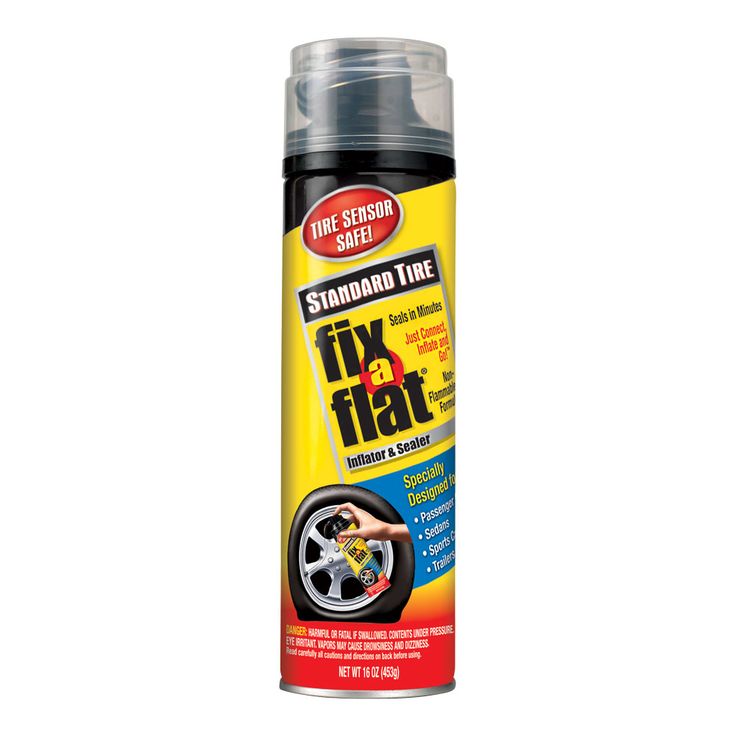 Over-inflated tires become less able to hold air and eventually flex, creating a slow leak. Broken or missing parts. If one of the parts holding the tire together breaks, such as the bead on the tube, the air can escape more easily and create a flat or slow leak. Excessive wear. If you constantly drive on rough roads or turn at high speeds, your tires will wear faster than normal, which will also lead to punctures and slow leaks.
Over-inflated tires become less able to hold air and eventually flex, creating a slow leak. Broken or missing parts. If one of the parts holding the tire together breaks, such as the bead on the tube, the air can escape more easily and create a flat or slow leak. Excessive wear. If you constantly drive on rough roads or turn at high speeds, your tires will wear faster than normal, which will also lead to punctures and slow leaks.
There are a few things you can do to help prevent flats and slow leaks. The most important thing is to keep your tires properly inflated. Over-inflating your tires can cause them to burst, resulting in a puncture. the brakes are working properly. If they don't stop the car fast enough, water can seep through the brake pads onto the discs, causing a slow leak. to a mechanic so he can fix it before it becomes a bigger problem.
The first step is to determine if a flat is a slow leak.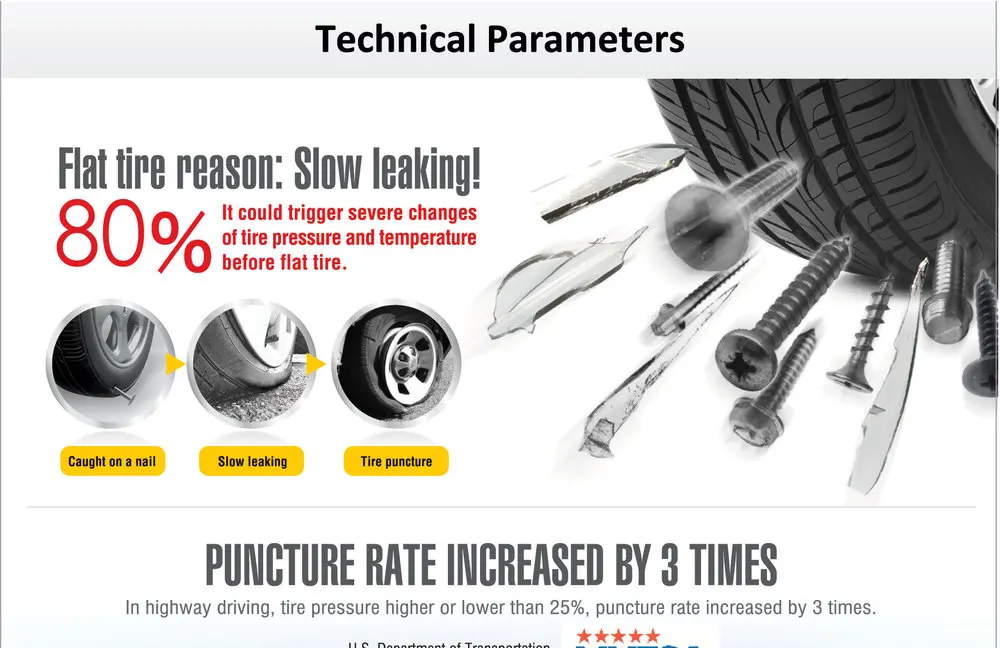 If so, you need to replace the tire. Slow leaks can be fixed with a patch kit or with a plunger. use a pump and a patch kit or use a bike repair stand to fix a puncture. Finally, make sure you have all the necessary tools before you fix a flat tire.
If so, you need to replace the tire. Slow leaks can be fixed with a patch kit or with a plunger. use a pump and a patch kit or use a bike repair stand to fix a puncture. Finally, make sure you have all the necessary tools before you fix a flat tire.
If you have a slow leak, it's important to get your apartment fixed as soon as possible. A flat one can cause the leak to get worse and eventually lead to full blown flooding.
In most cases, repairing the apartment will stop the leak. However, there are some exceptions where apartment repair is not possible and the car needs to be replaced. If you are not sure if your car needs repair, consult a mechanic.
The following tips will help you renovate your apartment:
- Remove any items that could cause a flat tire; this includes stones, screws, nails, etc.
-Check for damage to the wheel rim or tire surface from hitting something hard while driving; this may indicate that the problem is not just a small hole in the tire.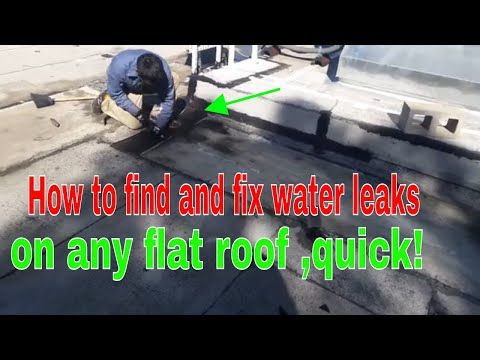
- Clean up all debris in and around the tire using soap and water; this will help remove any foreign objects that may have caused flat feet.
- Replace or patch any holes in the tire with new rubber; do not use duct tape as this can further damage the tires over time.
Repairing a flat tire can take anywhere from a few minutes to an hour or more. The most common cause of flats is a slow leak, so it's important to identify the source of the problem and fix it as soon as possible.
To fix a flat tire, you will need some tools, including a wrench, a screwdriver, and a spare tire. You will also need some basic knowledge of how cars work and how to change a tire.
First, check the source of the leak. If it comes from the tube itself, unscrew the cap and use a pump to remove air bubbles. Replace the tube if necessary. .This will help remove any air that may have gotten into their rubber surfaces.
Once you have determined that there is indeed a leak, remove the wheel by loosening the bolts and removing it from the axle (or hub).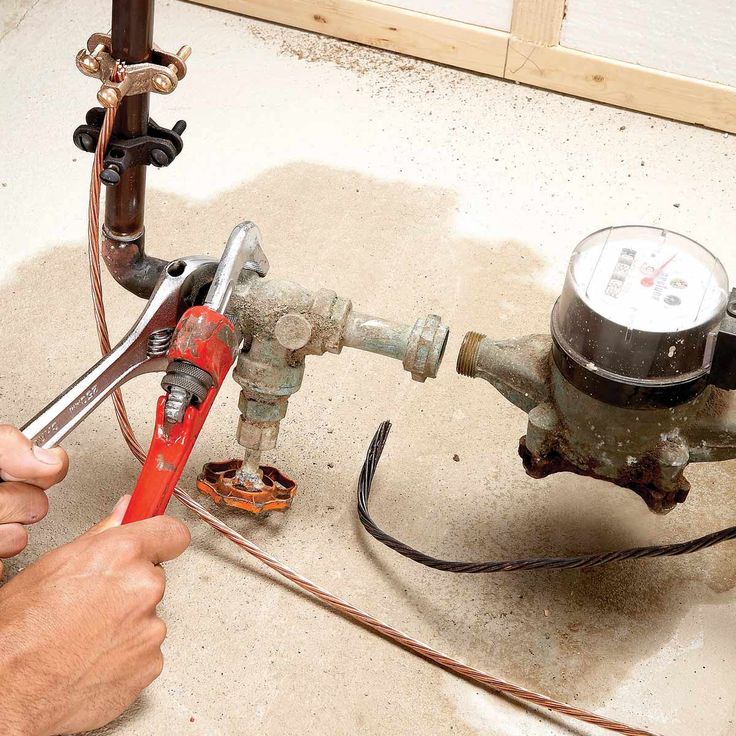 Be careful not to pinch your fingers when doing this! After removing it, place it on newspapers or rags so that dirt or debris does not get into the machine during operation.
Be careful not to pinch your fingers when doing this! After removing it, place it on newspapers or rags so that dirt or debris does not get into the machine during operation.
Then remove the old tire by prying it off the rim with a wrench (or pliers if necessary). Save this rim for later; you will need it to replace the new tire after you put it back on your car. Remove any nails or screws holding the old tire in place; they may have become stuck in the rubber during installation and may cause problems later when attempting to properly reinstall a new tire.
If you have a slow leak from your tire, it is important to fix the flat tire as soon as possible. Here are some tips to fix a flat tire: 1. Get out of the car and remove the wheel. 2. Use a wrench to loosen the lug nuts and remove the wheel .3.Place a piece of plywood or cardboard under the tire and put the wheel back in.4.Replace the lug nuts and tighten them with a wrench.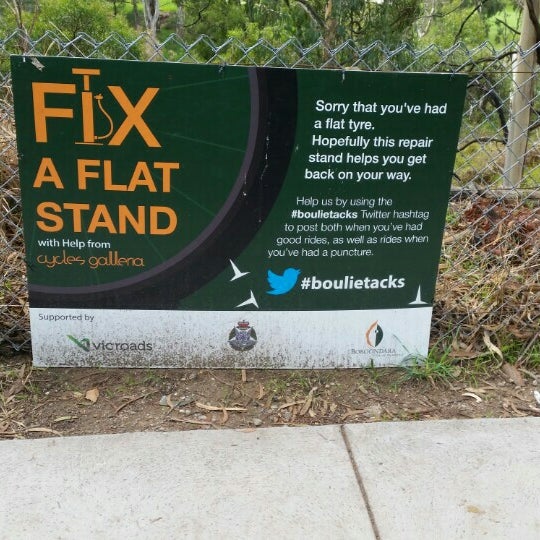 5.Go to the nearest gas station or convenience store and get help fixing the tire there.Park where you can easily access the spare tire if needed. Change tires when they show signs of wear10. Drive carefully so you don't get another apartment11.
5.Go to the nearest gas station or convenience store and get help fixing the tire there.Park where you can easily access the spare tire if needed. Change tires when they show signs of wear10. Drive carefully so you don't get another apartment11.
If you have a flat or slow leak, you can get your tires repaired at most tire shops. However, some tire shops may be better equipped to deal with this problem than others. If you don't know where to go, try contacting your local an AAA club or a car club. They may be able to point you in the right direction.
If you have a slow tire leak, there are a few things you can do to try and fix the problem yourself. First, make sure the hole is large enough for a repair kit to fit through. you will need to go to a mechanic. Secondly, use a repair kit to repair the hole in the tire.